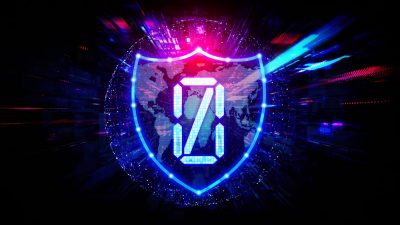Cloud security has been a topic of debate under all the technology verticals. How secure is my data in the cloud? How the cloud will evolve under future challenges? Cloud storage service providers are currently trending across the news because of the constant reports of a data breach, the data leaks resulting due to misconfiguration involved in the cloud. Some headlines have even highlighted the news that how the inexperienced user has led to weak security in cloud implementation due to the complexity of the process.
Cloud security issues are not single channeled issues, they are multi-faceted issues involving technologies, and how organizations are going to approach the cloud transition? The nature of security threats will be the building block and effective use of cloud assets in a secure way.
Nature of Cloud Security Risk.
News headlines have highlighted data leakage from misconfigured clouds, particularly focusing on AWS S3 bucket which is projected as not so secured cloud technology. Though the AWS S3 bucket mainly involved in the high-end enterprise holding some extremely important data. This data can be used for various purposes like direct financial gain, privileges and even identity impersonation. As threats get cultivated the cloud user has to be aware of different levels of threat.
 1. Data Breach: A data breach might be the objective of the targeted attack, or due to human error, application vulnerabilities, or poor security practice. Data breach involves the release of the data not intended towards public information. The data breach has been consistently ranked as one of the top concern in cloud security.
1. Data Breach: A data breach might be the objective of the targeted attack, or due to human error, application vulnerabilities, or poor security practice. Data breach involves the release of the data not intended towards public information. The data breach has been consistently ranked as one of the top concern in cloud security.
2. Insufficient access management: Cloud access management is one of the major security concerns faced by service providers and users. The malicious entry in any of the cloud data can be damaging, the threat can alter the data, or leak the data. Insufficient identity and access levels are a threat towards the cloud. Access management should be based on the use of the data and the sensitivity of the data.
3. Shared Technology vulnerability: Cloud Service providers deliver their services with scalable information by sharing infrastructure, platform, and applications. Cloud technology works on a principle “as-a-Service” offering a substantial combination of hardware and software. The providers usually don’t change the underlying software or hardware components this result in shared technology vulnerabilities.
The first step towards minimizing the threat is laying the regulations for your data. For this, you need to understand the significance of migration and transition process.
The Significance of Migration and Transition Process!
Complexity and misconfiguration of the cloud are one of the prime reasons which are blamed for the data leaks. Companies who adopt cloud should dig deep if there is any fundamental issue with the cloud approach they are undertaking. Cloud is approached as another extension of the data center, while for the providers it’s one of the major selling points, but companies need to rethink the internal procedures of technology both on the parts of software and hardware.
Organizations making a transition towards cloud need to significantly understand the potential points where serious leaks could happen. While the cloud brings flexibility, it’s important to recognize the cloud transition is an opportunity to take advantage of all the tools to run a secure software deployment, and flag if the functionality is unused. The cloud technology is based on the repetition, and if the cloud migration and transition are good the results will also be good.
Here are Few Things to Consider before the Cloud Transition Stage!
1. Implementation of unsparing separation of duties within the cloud. The security team, not developers should be setting the permission on the bucket. A third entity should be kept to approve the publishing.
2. Cloud is good at repetition, are you creating a standard configuration and an image? The results will be based on your field of predictability.
3. Depending on the critics of the data are you using the adaptive internal process?
4. Will you be using the AI or machine learning to evaluate the criticality of the data stored in the public cloud? It’s important to have a system in place to analyze your critical data.
Implementing cloud security
Cloud service providers and user co-share the responsibility of securing the cloud. It might depend on the complexities of the cloud and data functionality. Major roadblocks for adopting cloud is security, and data privacy, implementation of cloud security with the adoption of a single technology to manage the end-to-end security of your cloud will reduce the misconfiguration and complexity.
Implementation process
1. Software and Hardware would form the structural base of your implementation process. If a user goes in for Infrastructure-as-a-service (IaaS) it would typically provide access to networking features, the system (Virtual or dedicated) and storage space. IaaS provides flexibility and management control over different IT resource.
2. Platform as a Service (PaaS) gives the user an infrastructure which consists of both hardware and operating system. Allowing the cloud user to focus on the deployment and management of the application.
3. Software as a Service (SaaS) provides the underline feature of software infrastructure and management of the same. Software as a Service (SaaS) the user is able to channelize the management of different software resources.
Setting in the cloud system as its planned and different modules are configured for standard use. Creating a pathway for control, automation, and reporting for each feature of the cloud is an important part of automation. The Implementation process can usually take upload of time as each of the access needs to be regulated with data transfer. Permitted accesses for each user are generated in the implementation process.
Training your employee
Training is an important part of complete cloud implementation and optimal usage. Conducting a personalized training for each team will help you to get important feedback and customize the needs and review features of cloud with them.
The increased capability of the cloud can be a big stepping stone while the security increases to the next level of maturity. The current market competition is bringing an undefined set of rules and regulation which is increasing the complexity of the implementation. Different tools or cloud service providers have clearly defined protocols to implement the hardware and software blocks to provide end to end security.
To know more about cybersecurity, you can download our whitepaper.














